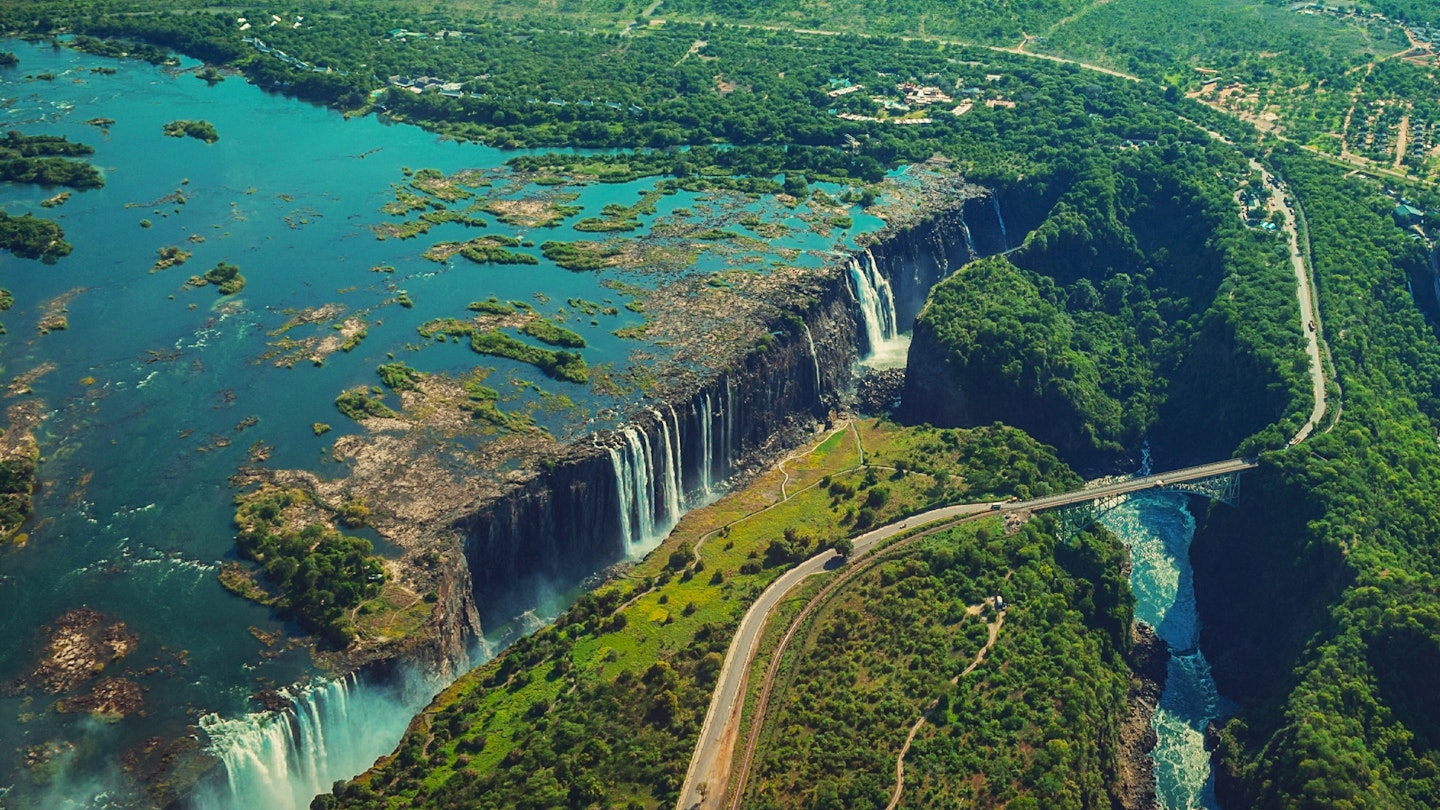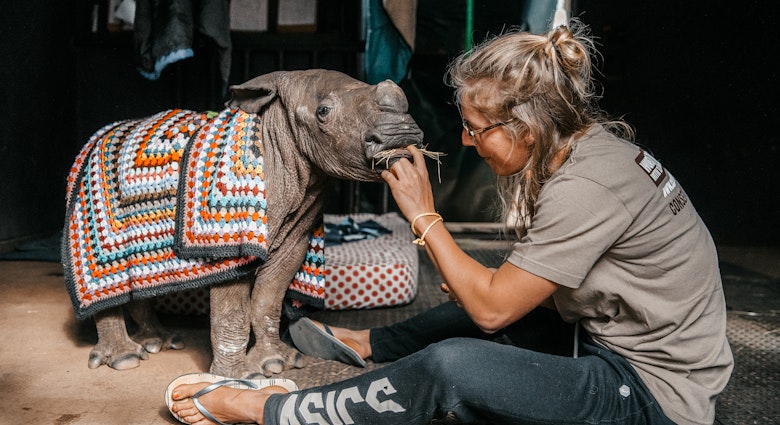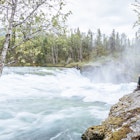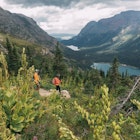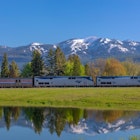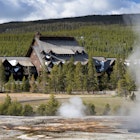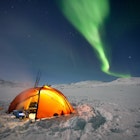Eyes around the world have turned to Victoria Falls as recent reports that droughts in southern Africa and warming global temperatures have caused the famous cascade to “shrink to a trickle."
But local authorities insist that, while water levels are far from their peak, Mosi-oa-Tunya (the Smoke that Thunders) is alive and well – and shows no immediate signs of vanishing. With an end to the annual dry season just around the corner, what is really going on at Victoria Falls?
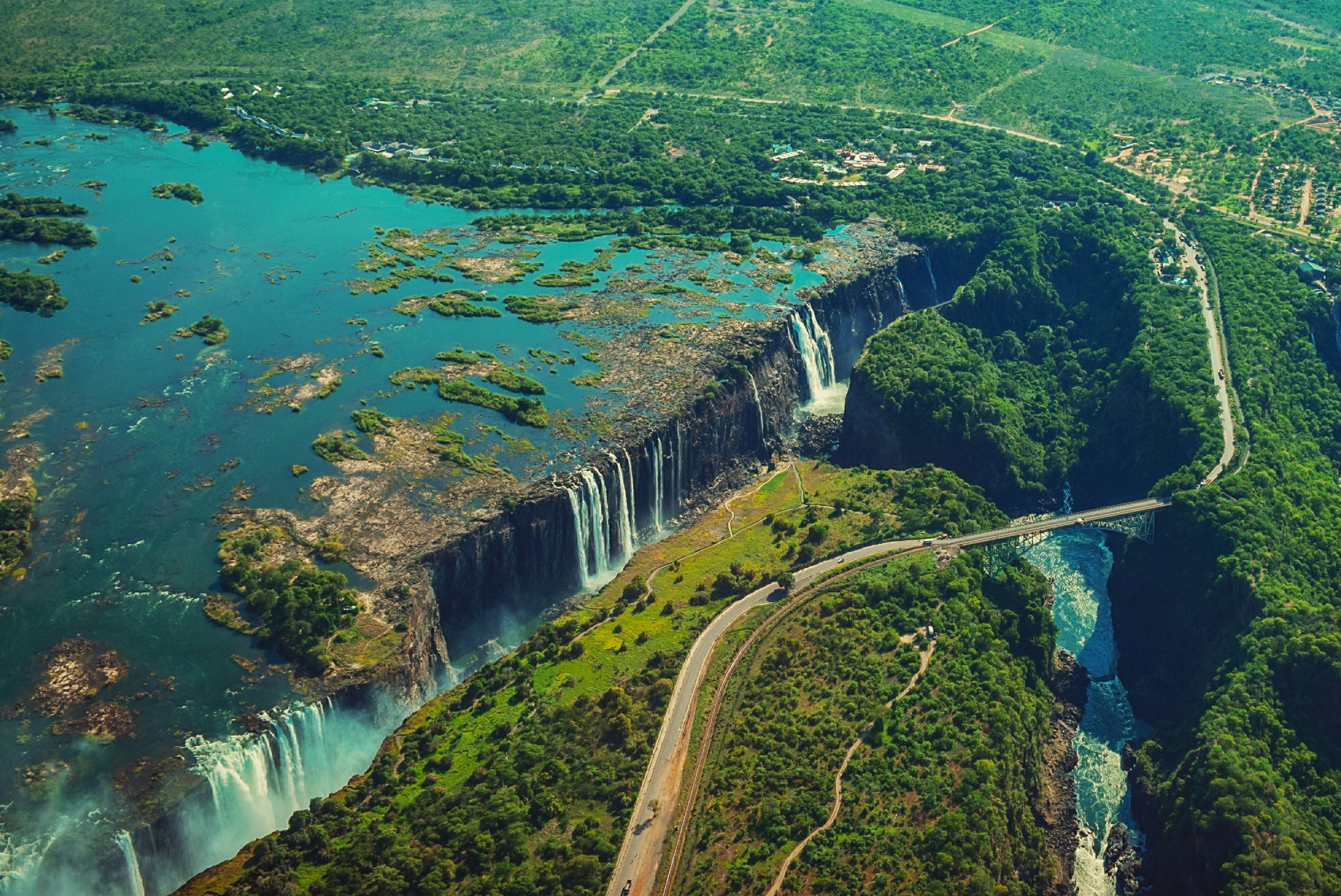
Hundreds of thousands of years before a Scottish explorer named Dr. Livingston christened the falls in honour of Queen Victoria in 1855, gentle flows of volcanic lava spread out across southern Africa like honey poured onto a cookie sheet. Those minor eruptions formed a relatively flat stretch of basalt along a high plateau in parts of what are now the Democratic Republic of Congo, Angola, Zimbabwe, and Zambia. Eventually, the massive Zambezi River cut through cracks in that basalt, forming deep gouges like the Bakota Gorge into which the falls spill today.
Like Niagara Falls, Victoria Falls sits on the border between two countries – Zimbabwe and Zambia. You’ve likely seen photos of the western, Zimbabwean side of the falls where the lion’s share of the Zambezi’s water flow spills over. Many of the recently circulated shots of the supposedly bone-dry Victoria Falls were snapped of the Eastern Cataract on the Zambian side, which sits at a higher elevation and regularly dries up for a few months each year – a phenomenon called “Victoria Walls.”
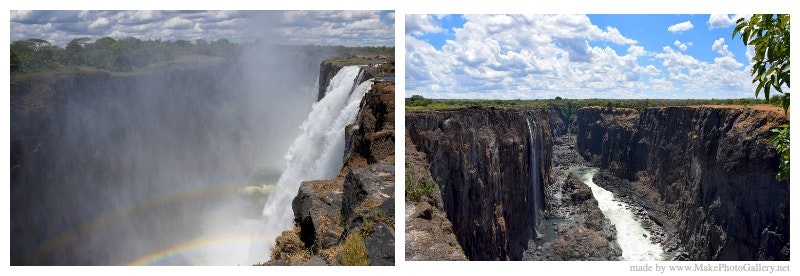
“Every single year the Eastern Cataract of the Victoria Falls exposes a dry rock face, normally between the months of October to December,” explains Wilma Griffith, a marketing executive at the Wild Horizons Lookout Café, a restaurant overlooking the Batoka Gorge. “Historical figures show that on or around 14 November the river is at its lowest and then gradually starts to rise again around 14 December, once the localised rains start having an impact on the Zambezi.”
November and December are the end of spring and the beginning of summer in the southern hemisphere, but it can take time for the post-winter rainfall in the DRC and Angola to travel downstream to Victoria Falls, and eventually to in the Indian Ocean. Those familiar with the Zambezi say the annual dry season is already coming to an end. “The water levels are changing,” says Warren Ncube of the Zambezi Helicopter Company, “and with the rains we will soon have a full flood.”
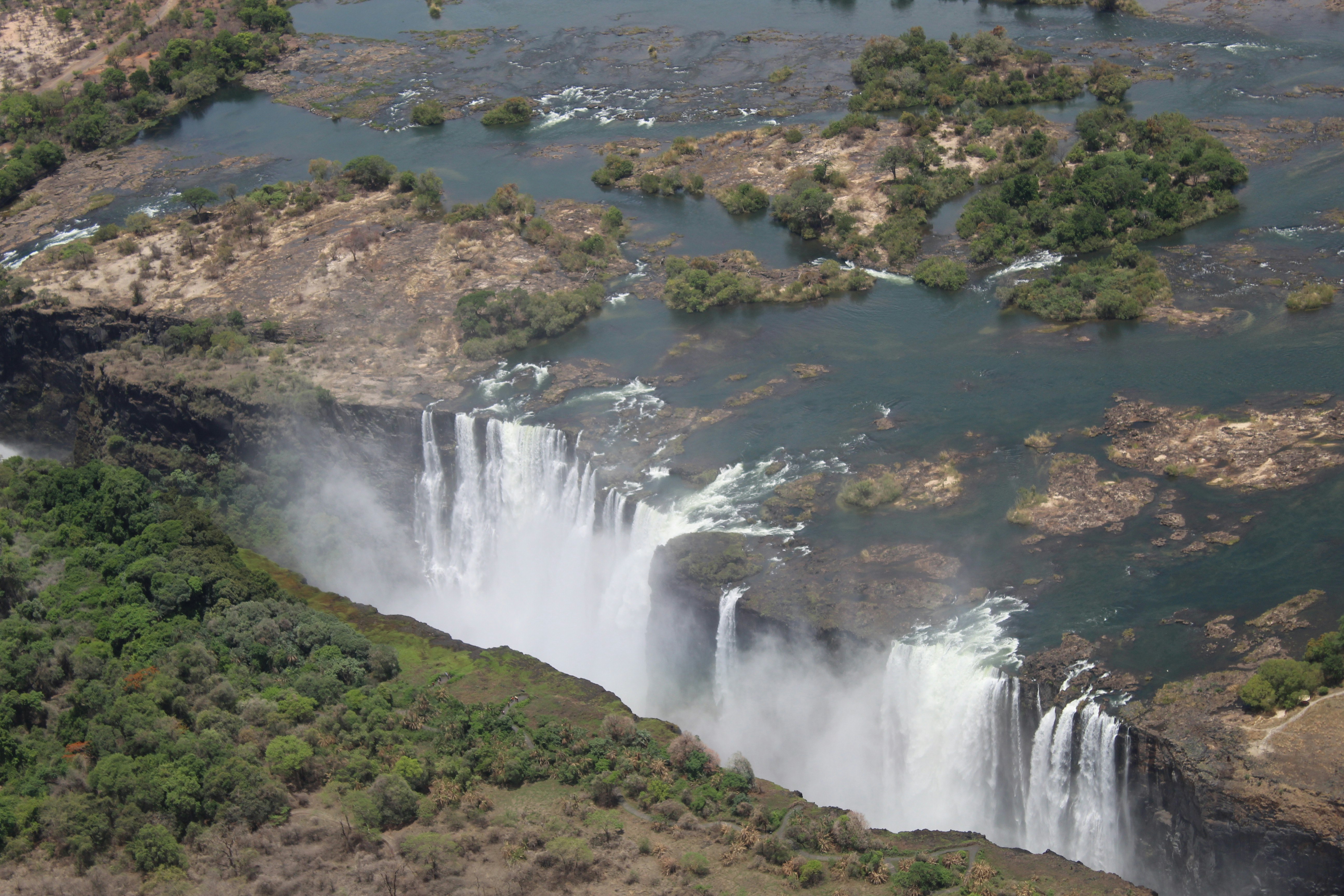
According to the Zambezi River Authority, the flow at Victoria Falls can be as much as 10,000 cubic metres per second (recorded during an especially wet March in 1958), or as low as 390 cubic mps (recorded during the drought of 1995), while the long term annual mean is about 1100 cubic mps. Most recently, the flow has been 252 cubic mps – low, but still higher than this time last year, when Zimbabwe was experiencing a drought.
While photos of the western side might be more impressive in, say, April when flow is at its peak, the local tourism industry actually relies on the Zambezi’s seasonal fluctuations to offer a broader range of adventure activities and viewing opportunities. The dry months are when white water raft guides can safely take visitors on longer routes through more rapids than when waters are high. The dry season also opens up the Devil’s Pool – an area of rock pools right on the lip of the Zambian side of the falls – when the current and water volume are light enough that swimmers won’t be carried over the edge.

“We chose to go in December so we could experience the Devil’s Pool,” said travel writer and Lonely Planet contributor Angela Ballard of the trip to Victoria Falls she and her husband Michael took in 2018. “You can’t get in the water at the top of the falls during the height of the wet season, because it’s too dangerous. A December canoe safari on the Zambezi also offered plenty of up-close wildlife sightings without another boat in sight.”
While drought-exacerbated dry seasons like the one the Ballards experienced still produce an impressive show at Victoria Falls, they do spell hardship for other regions of Zimbabwe. When the wetlands where the Zambezi River originates are parched by drought and when rainfall slows in the Angolan highlands, or when it comes all at once in major monsoons and floods, that can stress delicate ecosystems. That's not to mention the impact on farmers’ livelihoods, other nature-based tourism like safaris, and even power grids depending on hydroelectric dam output.
Related: Where (not) to go in 2100: sites under threat from climate change
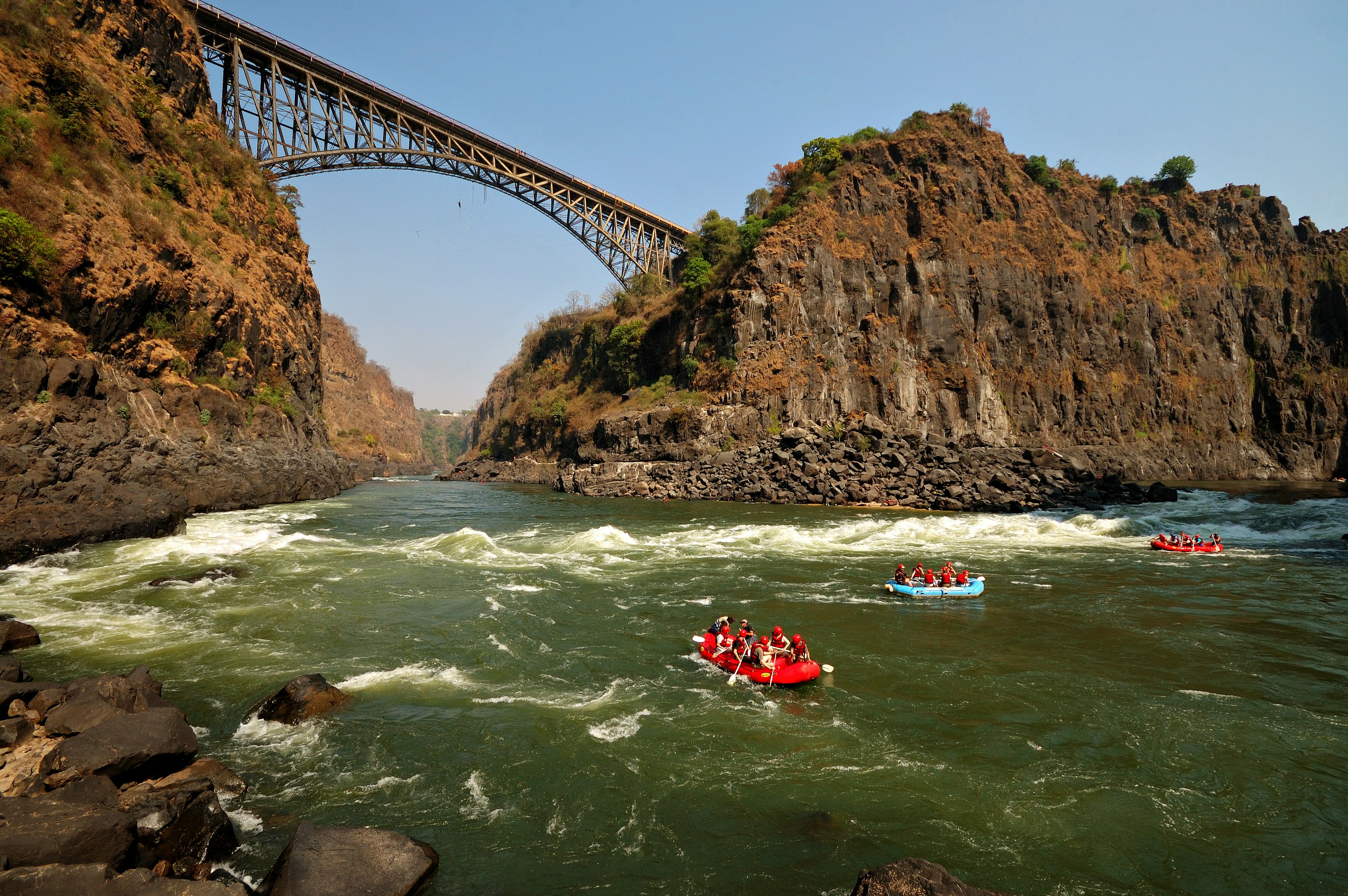
Zimbabwe has weathered several back-to-back droughts in recent years, which scientists believe to be caused by fluctuating El Niño weather patterns linked to climate change. Meanwhile, the tourism industry in Zimbabwe has been steadily growing – in November of 2018, the South China Morning Post reported that hotel occupancy rates in Victoria Falls were at a two-decade peak and as many as 300,000 visitors were expected in the coming year.
That's good news for many Zimbabweans looking for work that isn't so closely tied to the vagaries of weather. Nor is it surprising, then, that reports that one of the biggest draws in the country might be drying up have rattled those who now depend a regular influx of foreign travellers throughout the year.
“It is crucial to consider the livelihoods on the ground who are impacted by these reports,” says Griffith. “The tourism industry does not only support the revenue of countless people but it also plays an active role in the community and conservation of the area."
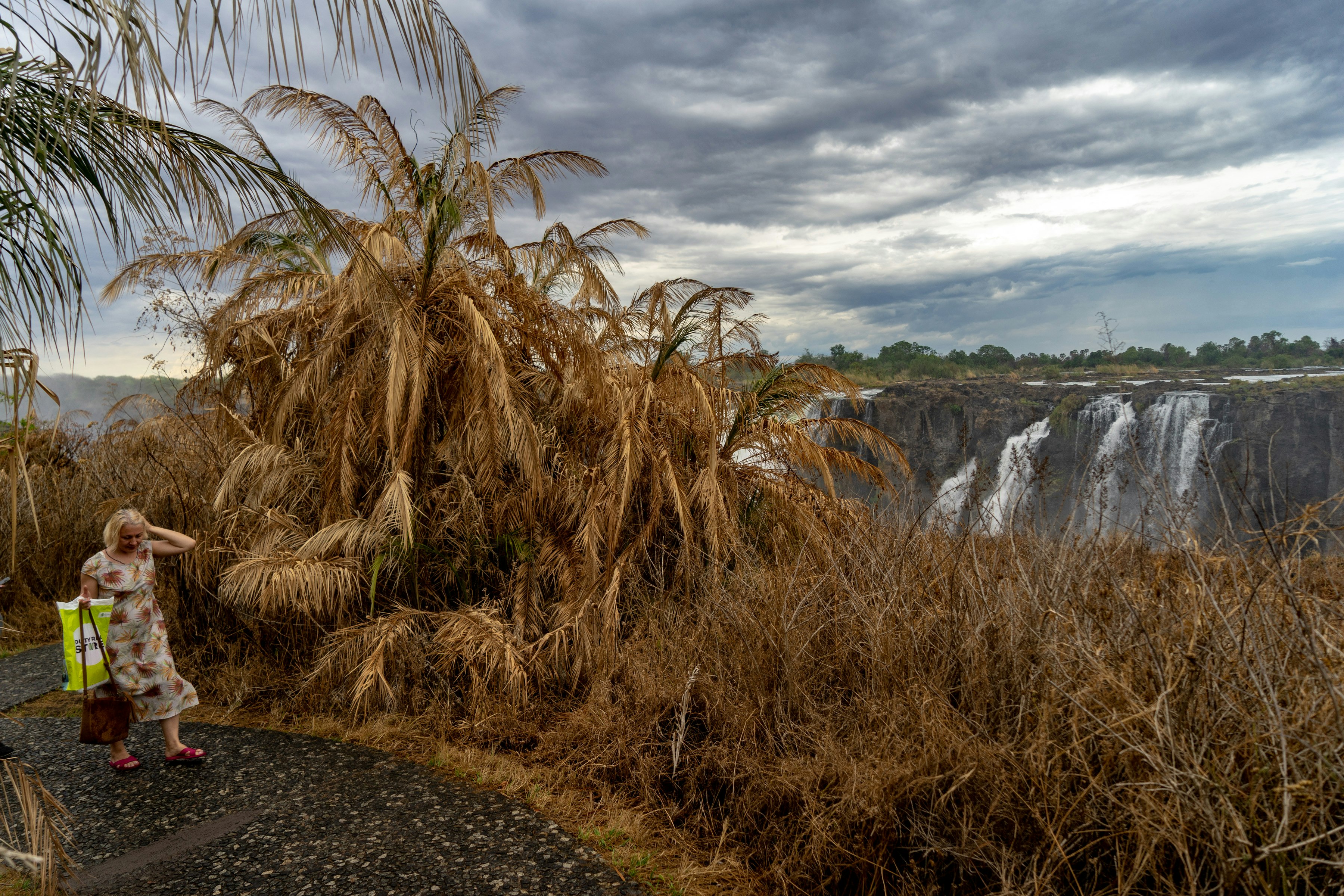
That’s a Catch 22 many destinations care facing as mounting concerns about climate change coincide with a global yen for international travel and outdoor recreation that shows little sign of slowing down. Venice, Italy, for example, has been battling over-tourism as well as recent bouts of unprecedented flooding. Glacier National Park in the United States has also seen a boost in visitor numbers even as many of its titular glaciers have starting shrinking dramatically. But tourism dollars can also be poured back into protecting the places that visitors love so well, in addition to local economies.
Regardless of how the flow at Victoria Falls continues to fluctuate, the burgeoning trend of sustainable travel may offer a middle ground for tour operators, hoteliers, and airlines around the world who want to minimise their impact, as well as eco-minded travellers hoping to make a smaller carbon footprint while globetrotting to Zimbabwe, Zambia, and beyond.
